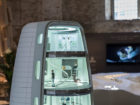Converging digital technologies and manual crafts
Designed for the garden of the Palazzo Mora in Venice, this doubly-curved vault was constructed without temporary support or guide work, using a novel mixed-reality construction approach. Referring to a digital model accessible via twenty quick response (QR) codes placed around the site, a data-driven augmented reality (AR) interface enabled skilled brick masons to guide the placement of each brick in a complex geometric pattern, reducing time spent reading construction drawings and assembling on-site guide work.
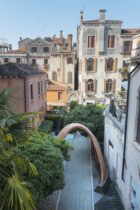
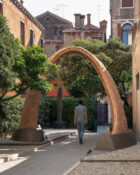
While the intricate, three-dimensional geometry of the vault is challenging to capture in traditional 2D construction drawings, the AR interface serves as an immersive and intuitive 3D construction document, showing the mason exactly where to place each brick. The skilled mason’s manual techniques are indispensable, however. The fluid form of mortar requires the mason’s expert timing, dexterity, and trained movements to ensure high-quality brickwork.
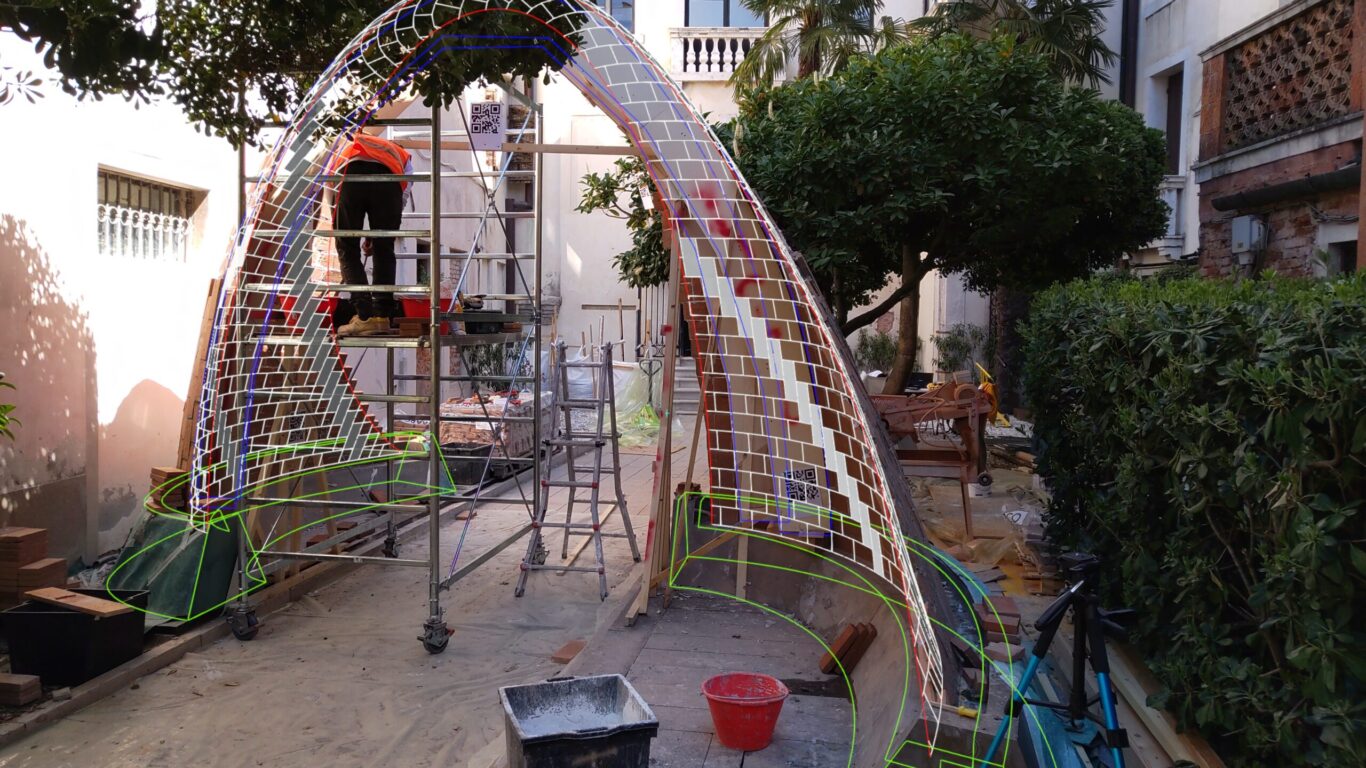
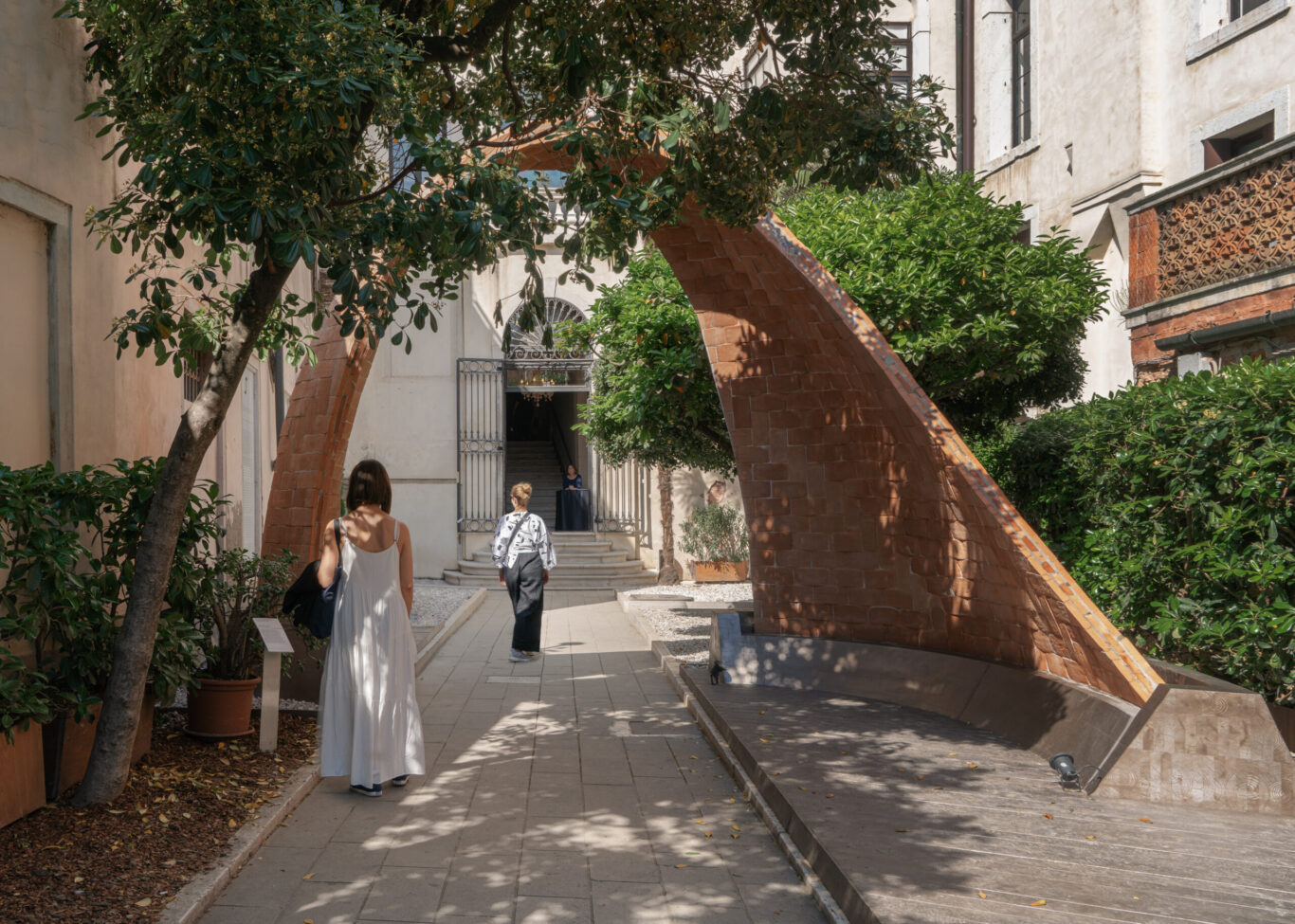
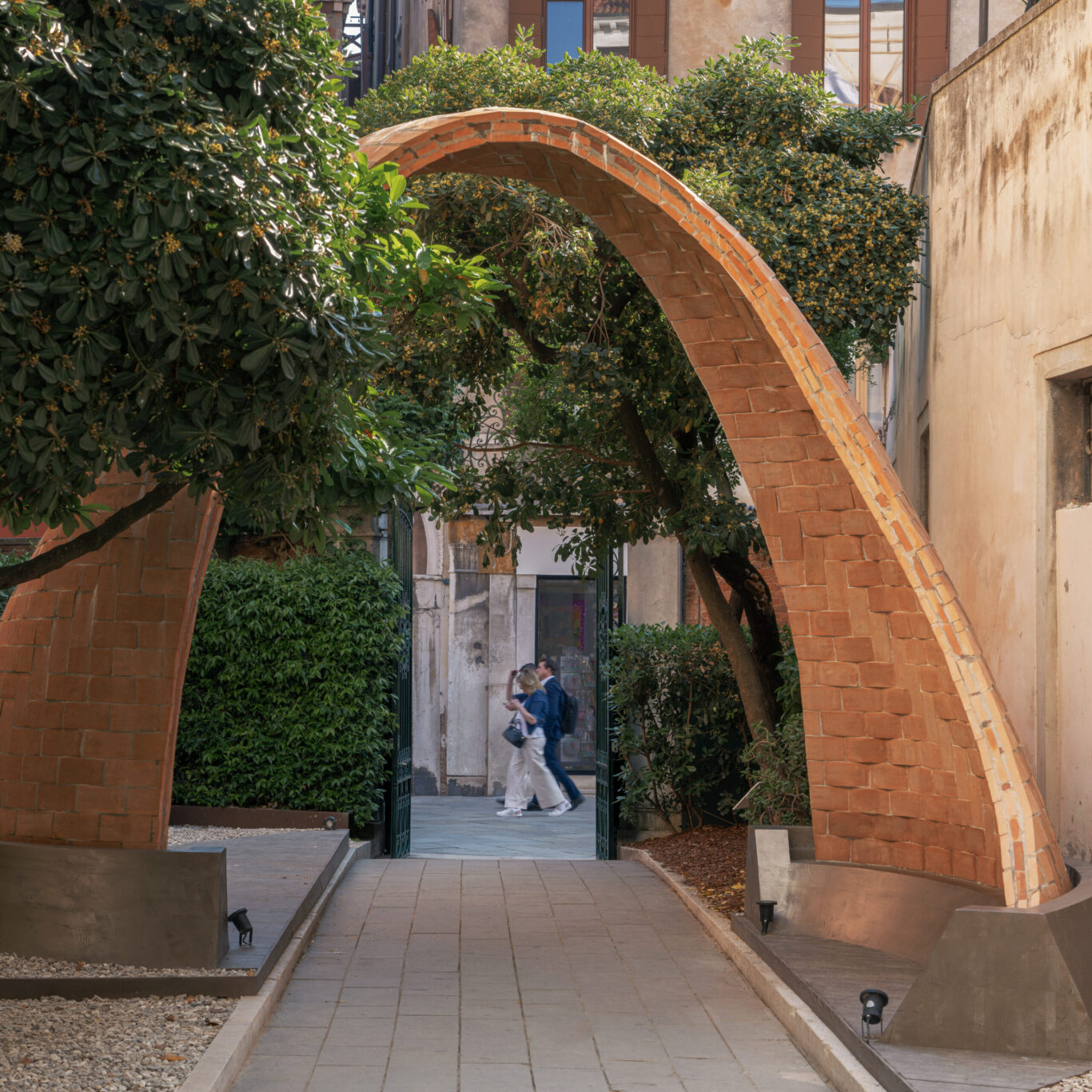
The result of a longstanding collaboration between SOM and the University of Princeton’s Form Finding Lab, the vault presents new possibilities for digital fabrication and efficient, sustainable construction. The project also demonstrates that the qualities afforded by manual crafts cannot be replaced by digital technologies. The vault is constructed from 2000 bricks which are handmade from recycled materials.
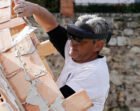
Reinventing a sustainable construction method
Researchers at the Form Finding Lab and the University of Bergamo discovered that the magnificent Italian Renaissance dome of Florence Cathedral (also referred to as the Santa Maria del Fiore) by Filippo Brunelleschi, as well as 11th-century Venetian domes, may have been built using self-balancing mechanics without external supports during the construction process.
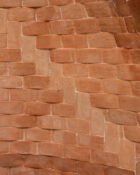
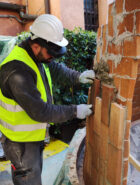
Self-balancing structures are constructed such that horizontally placed bricks interlock with vertically oriented herringbone bricks anchored in the underlying rows. These herringbone bricks, marked by a lighter color as part of the vault, are strategically positioned to ensure the stability of the structure.
The Angelus Novus Vault currently forms the entrance of the European Cultural Centre’s sixth edition of “Time Space Existence” in Venice. Unveiled to the public on May 20, 2023, the exhibition runs until November 26, 2023.
Collaborators
Form Finding Lab, Princeton University
UCHV Research Film Studio
University of Bergamo
Eng. Carlo Olivieri
IE University
Taramelli srl
Terreal Italia srl
Bóveda tabicada & CERCAA
JPF-Ducret SA




